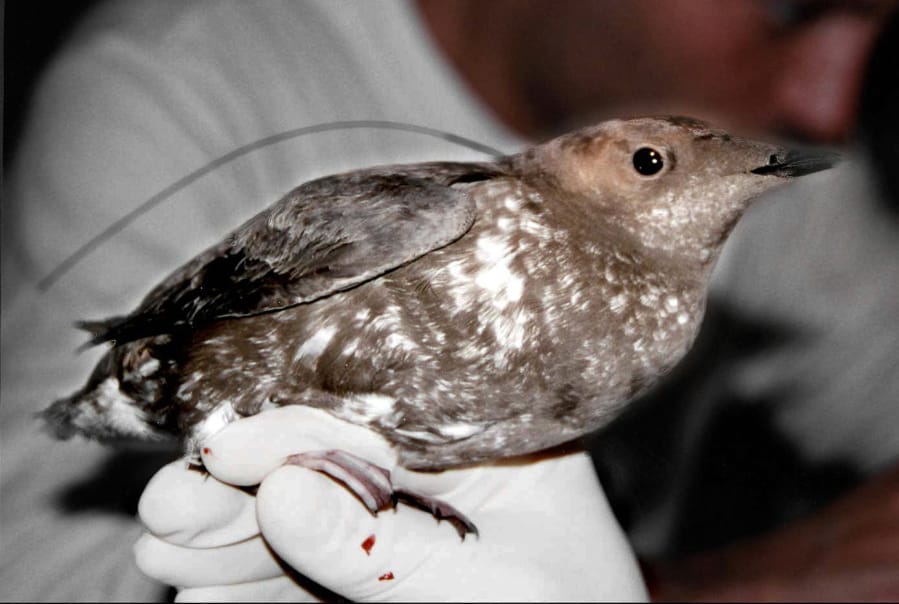SEATTLE — Nobody’s happy about the latest plans for Washington’s forest lands.
Not the environmentalists.
“Uncourageous,” said Peter Goldman, an attorney with the Washington Forest Law Center.
Not the timber industrialists, who predict lost jobs.
Not the local officials, whose economies and budgets rely on timber revenue.
“Double whammy,” said Rod Fleck, Forks’ city attorney.
Caught in the hubbub is the marbled murrelet, a zippy, robin-sized bird that spends time in coastal waters and nests in Washington forests.
No matter what officials choose for the forest, the seabirds are likely slated for at least a decade of decline, according to population models in the final plan for their conservation. Ocean conditions, prey availability, human activity and habitat loss are among factors scientists believe are playing a role.
The marbled murrelet needs thick tree branches in mature forest to raise its young.
Decades of logging and development on federal, state and private lands have left the bird with scattered patches of prime Washington forest suitable for nesting. Scientists say they need more.
But their habitat is also prime for logging. And in many rural communities, revenues from timber sales help sustain local institutions, like fire districts, putting the marbled murrelet at the center of a decades-long standoff over where and how much logging takes place in state-managed forests.



